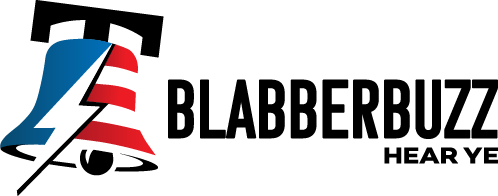U.S. District Court Judge Terry A. Doughty's ruling, which also suggested that the White House had violated the First Amendment during the pandemic, was hailed by many as a victory for free speech.
However, critics, including CNN legal analyst Ellie Honig and Tulane University Professor Walter Isaacson, condemned the decision as an overreach and an example of conservative judicial activism.
July 07, 2023
In his ruling, Judge Doughty compared the government's actions during the COVID-19 pandemic to an Orwellian "Ministry of Truth." He argued that the United States Government had assumed too much control over information dissemination, infringing on the free speech rights of its citizens.
WATCH: FUNNIEST ANTI-WOKE VIDEO![]()
While supporters of the injunction applauded Doughty's strong stance, detractors like Honig accused the judge of injecting his conservative political ideology into the decision.
July 07, 2023
Honig, in her analysis on CNN, characterized the injunction as a "dramatic" and ideologically driven ruling. She pointed out that the judge cited literature and historical figures such as George Washington and Ben Franklin, suggesting a conservative bias.
MUCH-ANTICIPATED STATE DEPARTMENT REPORT: WILL IT CLEAR ISRAEL OF VIOLATING INTERNATIONAL LAW?![]()
Honig also criticized the ruling for questioning vaccines and masks, which she viewed as conservative talking points. She labeled the decision as an "astonishing" example of judicial activism, accusing Doughty of attempting to micromanage the executive branch's daily activities.
CHAOS AND CONFUSION: GUNSHOTS INTERRUPT CALIFORNIA TEENAGE ROWING TEAM’S FINAL PUSH![]()
Similarly, Walter Isaacson, a professor at Tulane University, expressed his belief that Judge Doughty's decision went too far.
While acknowledging evidence of collusion between social media companies and the White House on censorship, Isaacson argued that the government should have the right to push back against what it deems dangerous ideas.
WATCH: NEW MAJOR AT EMORY COLLEGE - VIOLENT PROTESTING![]()
He viewed the ruling as a potential corrective but anticipated that it would be refined in the future.
The New York Times also faced criticism for its coverage of the injunction. The publication was accused on social media of framing the ruling as an impediment to fighting disinformation and misleading narratives.
READY TO GO BACK TO THE STONE AGE? EXPERTS WARN WHAT AN EMP ATTACK COULD DO TO THE U.S.![]()
The article's headline, "A judge limited Biden administration officials from contacting social media sites, a ruling that could curtail efforts to fight disinformation," drew ire from those who believed it downplayed the potential infringement on free speech rights.
LMAO: FINALLY, GOP PRESENTS A SOLID, QUICK FIX SOLUTION FOR CAMPUS PROTESTS![]()
The injunction itself stemmed from lawsuits filed by Louisiana and Missouri, alleging that the White House had encouraged tech companies to suppress certain opinions related to the pandemic and vaccines.
Judge Doughty noted that the censorship primarily targeted conservative speech, leading him to describe the case as potentially the most significant attack on free speech in U.S. history.
BORDER BETRAYAL: ANONYMOUS AGENT BLOWS WHISTLE ON CARTEL CONTROL OVER BORDER![]()
The ruling emphasized the government's alleged disregard for the First Amendment's protection of free speech in its attempts to combat disinformation.
As the debate surrounding the injunction continues, legal analysts and commentators are closely watching for potential appeals or refinements to Judge Doughty's decision.
The case raises important questions about the balance between government intervention and free speech rights, particularly in the context of social media censorship and the fight against disinformation.








 Discover alternative ideas that will make you think
Discover alternative ideas that will make you think Engage in mind bending debate
Engage in mind bending debate Earn points, rise in rank, have fun
Earn points, rise in rank, have fun


